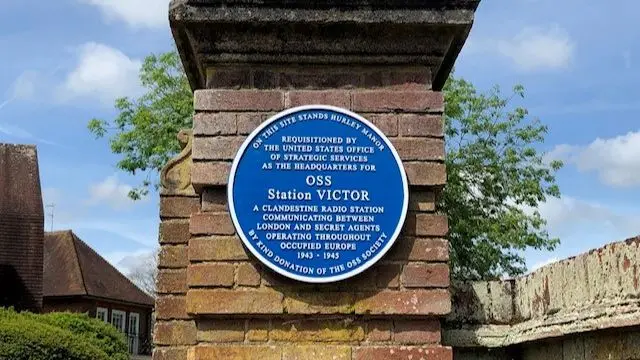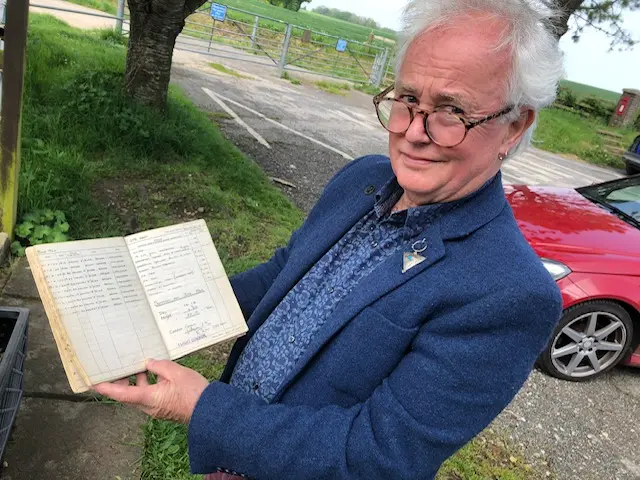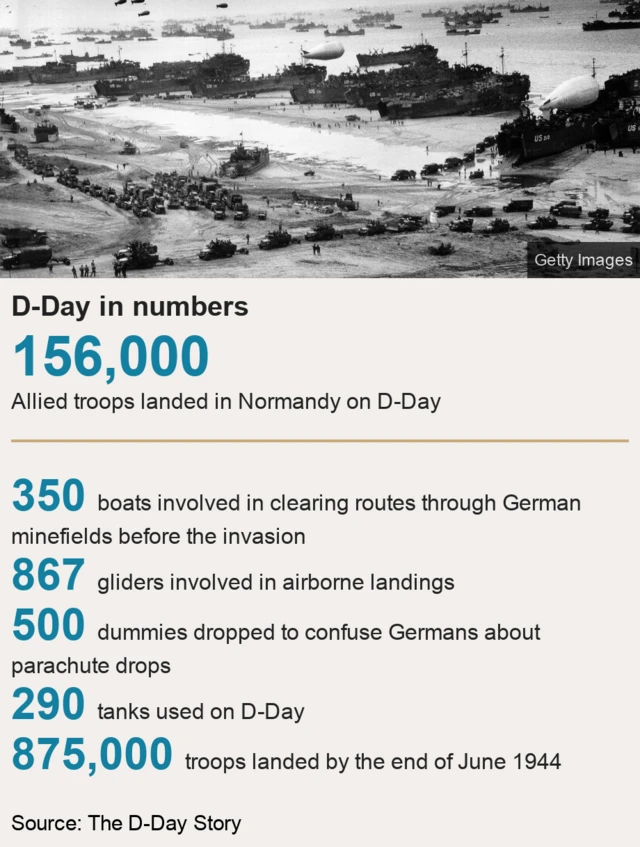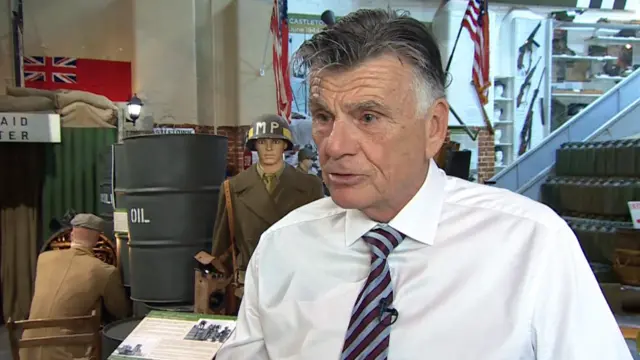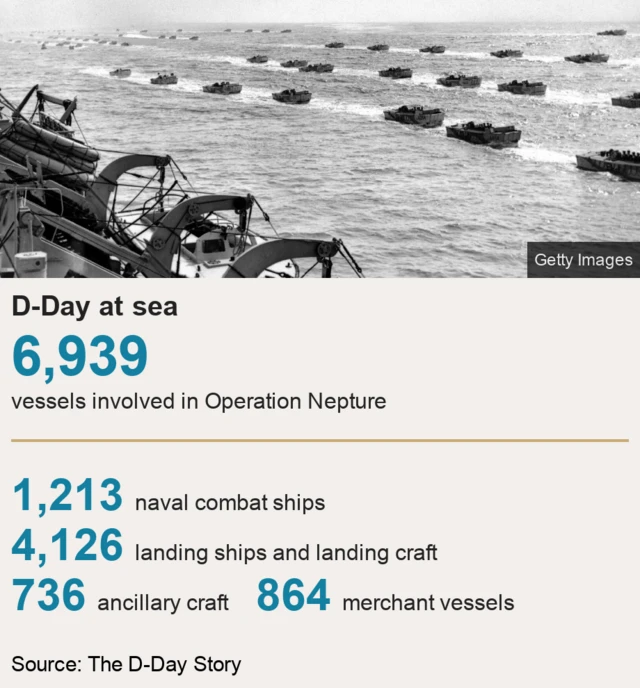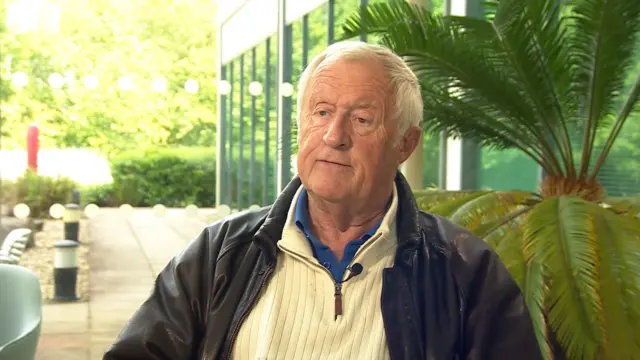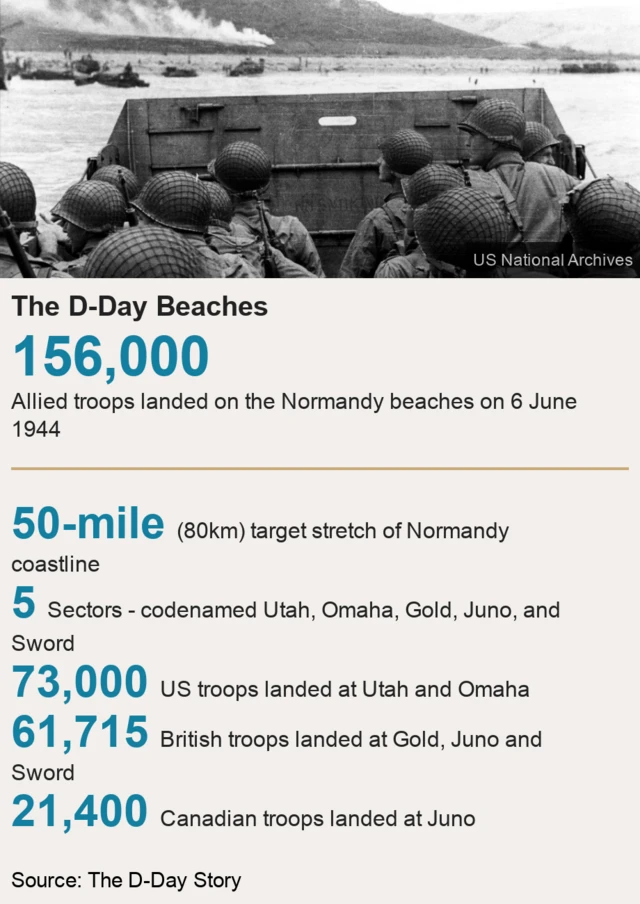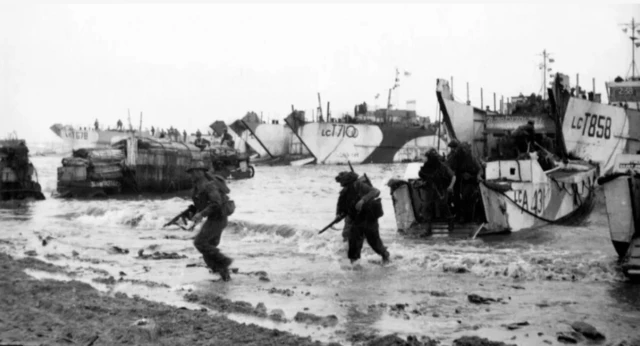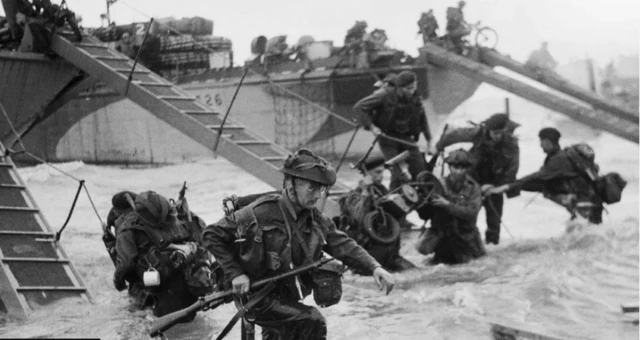In pictures: Airborne forces on D-Daypublished at 11:23 BST 6 June 2024
Airborne troops were dropped behind enemy lines in the early hours, while thousands of ships gathered off the Normandy coast for the main attack.
Shortly after midnight gliders landed as Allied troops seized key locations on the flanks of the Normandy beaches.
 Image source, Getty Images
Image source, Getty ImagesParatroopers landed in France as troops stormed the beaches
 Image source, Getty Images
Image source, Getty ImagesAn Allied glider that crash-landed into a hedgerow near Hiesville during the early stages of the invasion of France
 Image source, Getty Images
Image source, Getty ImagesAllied aircraft flew hundreds of sorties to maintain air superiority above the invasion fleet

